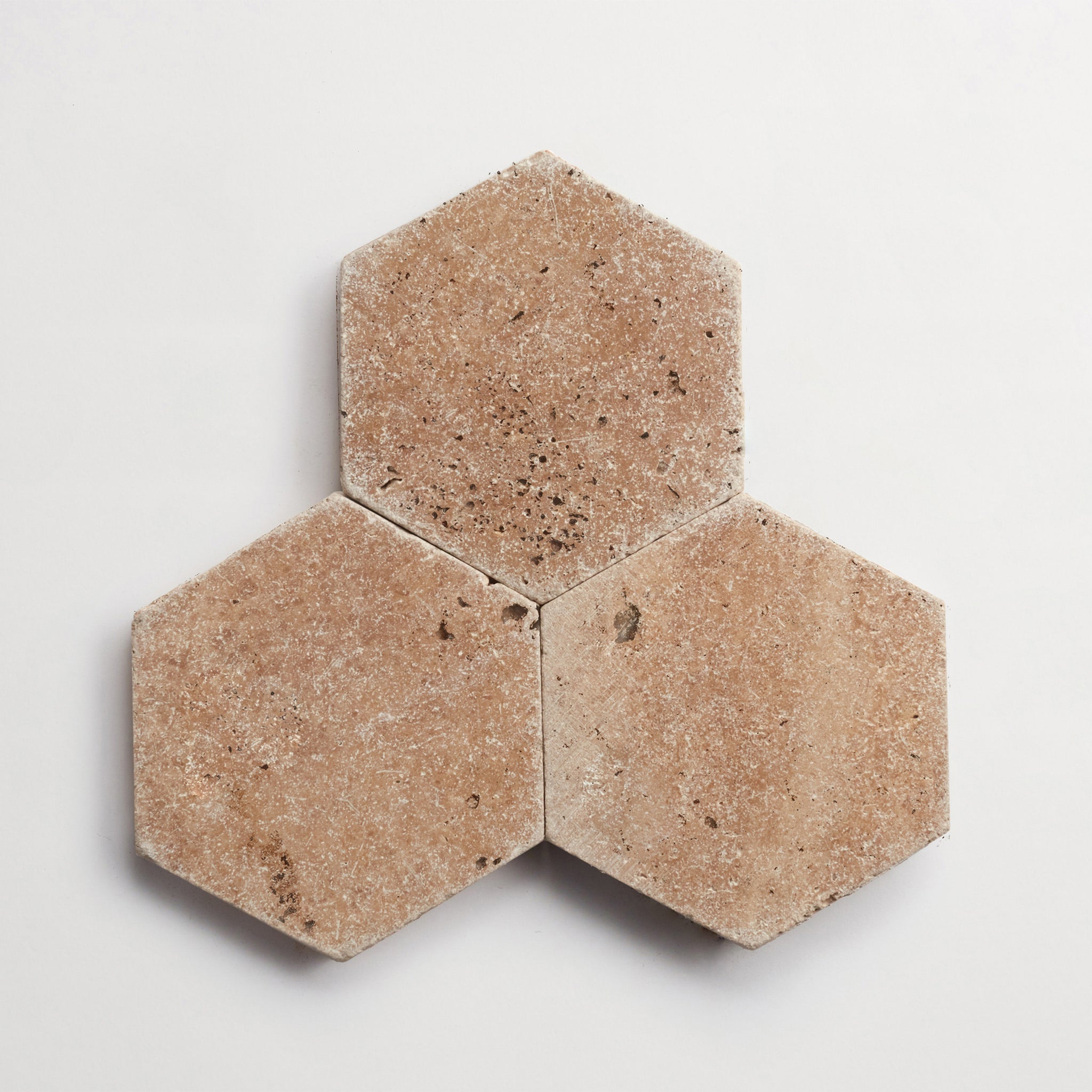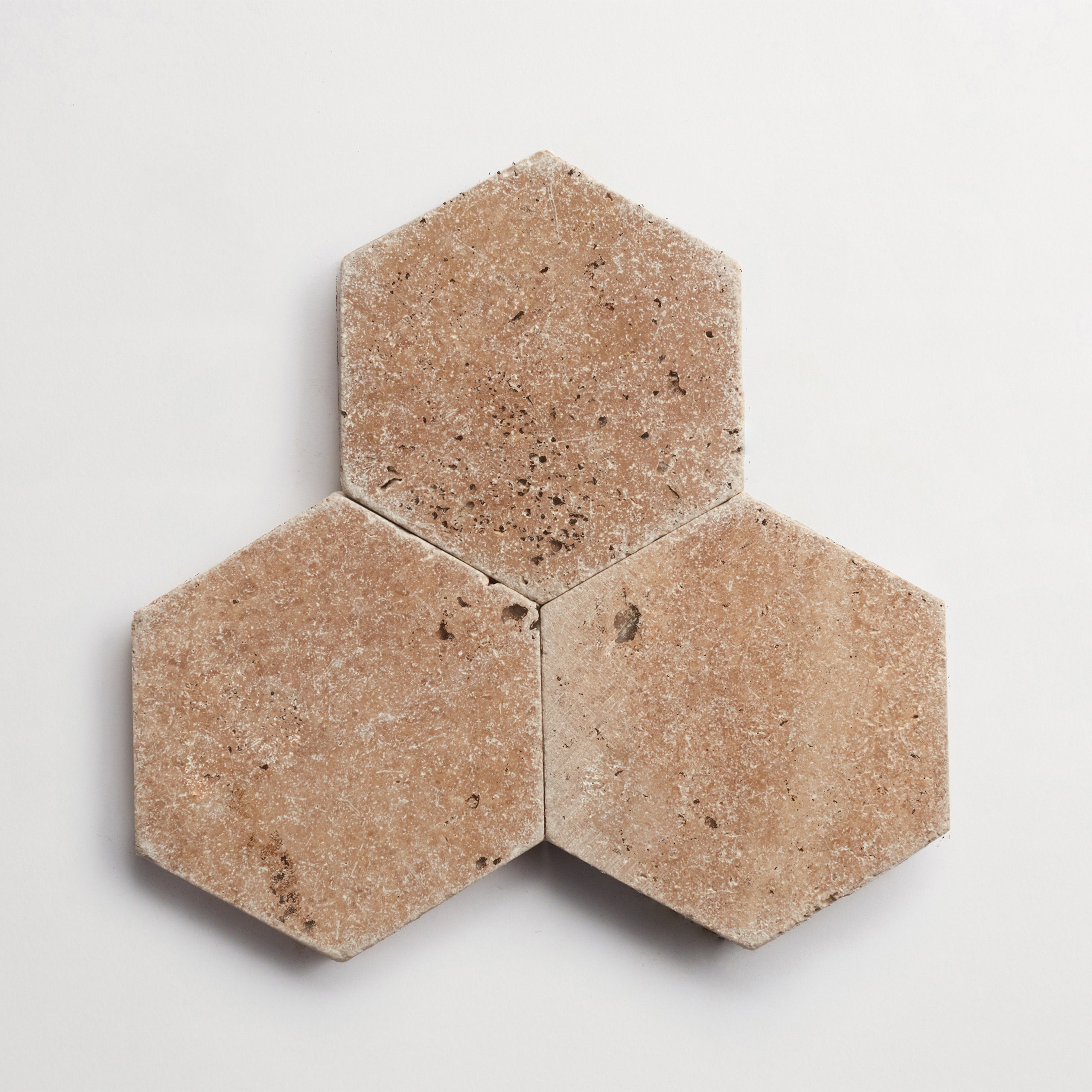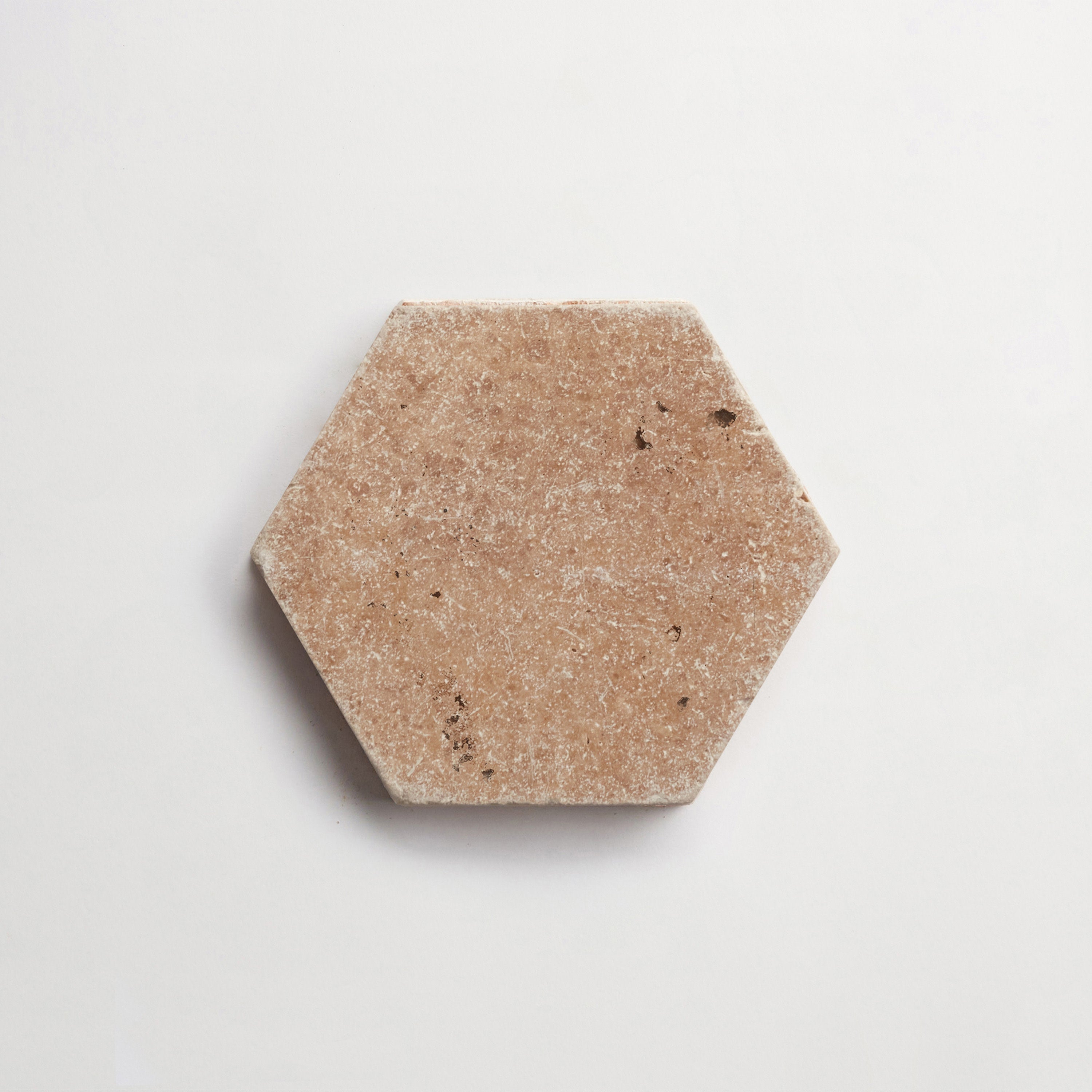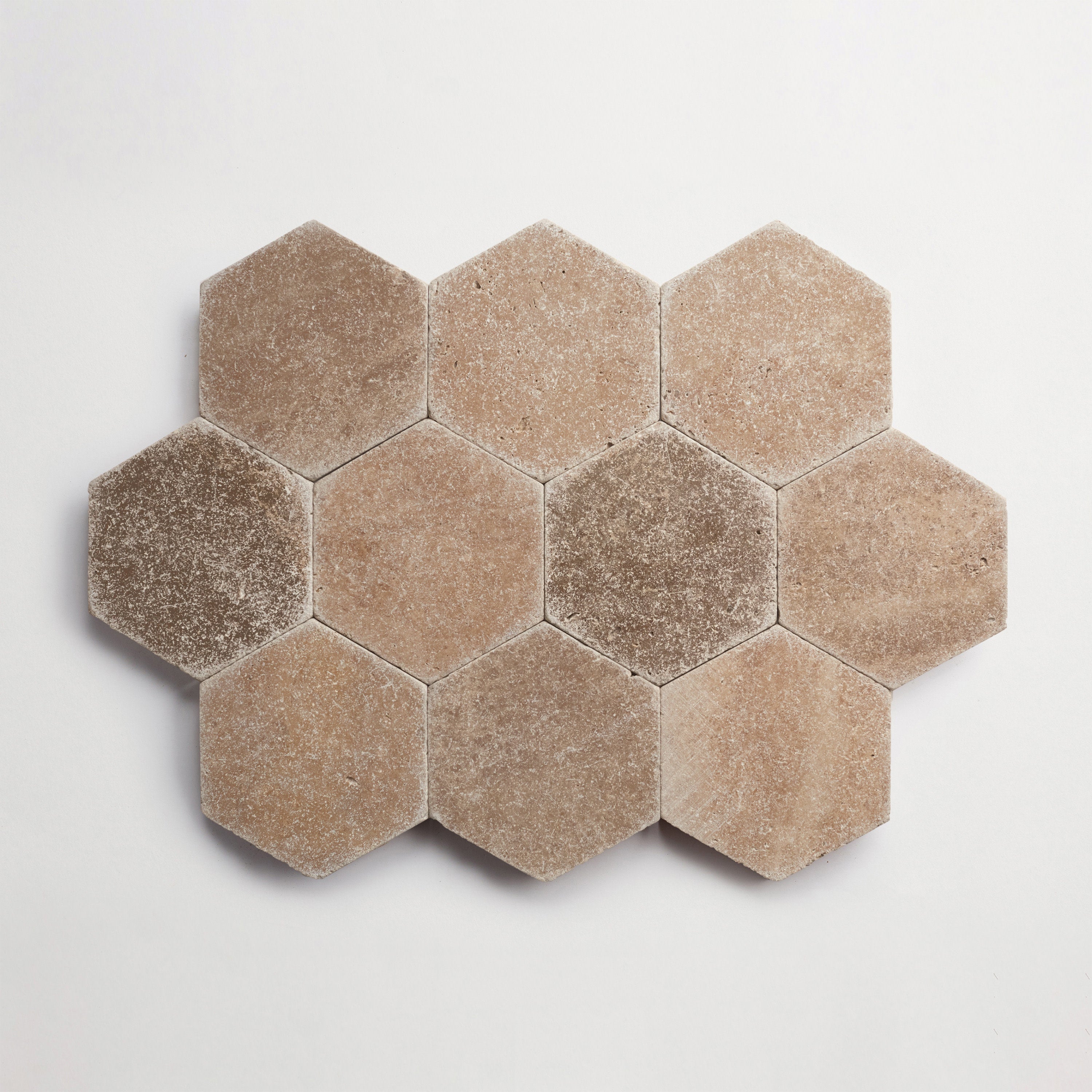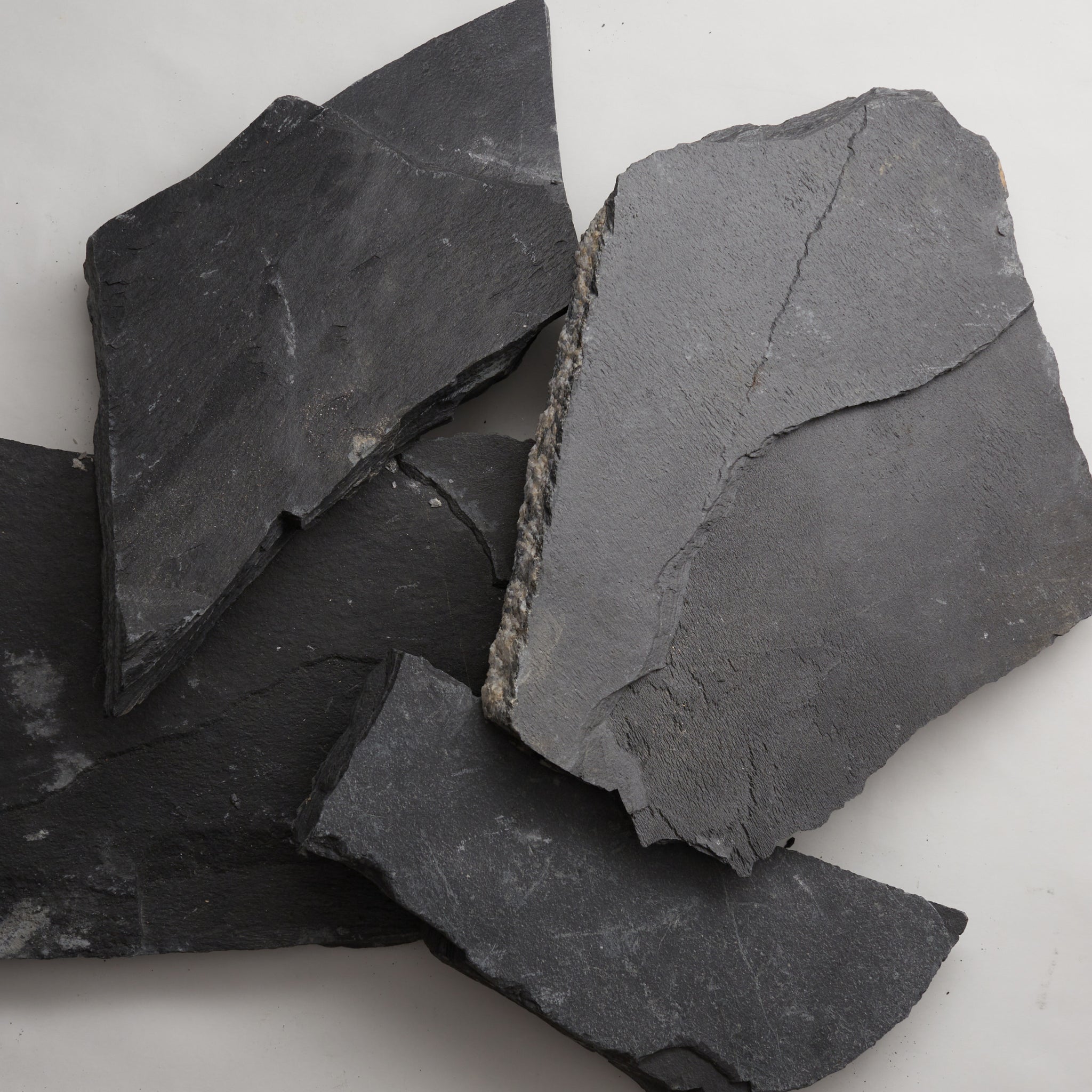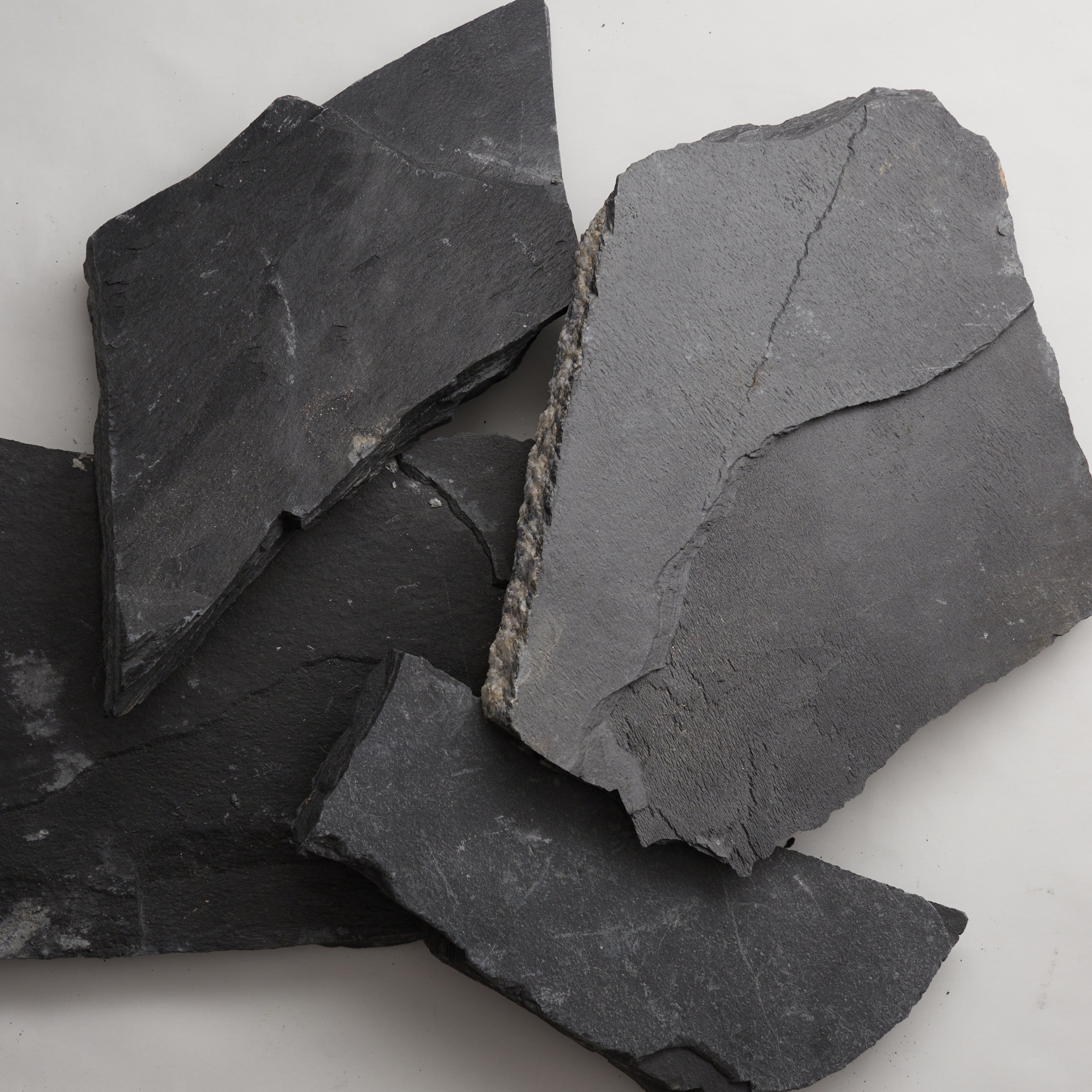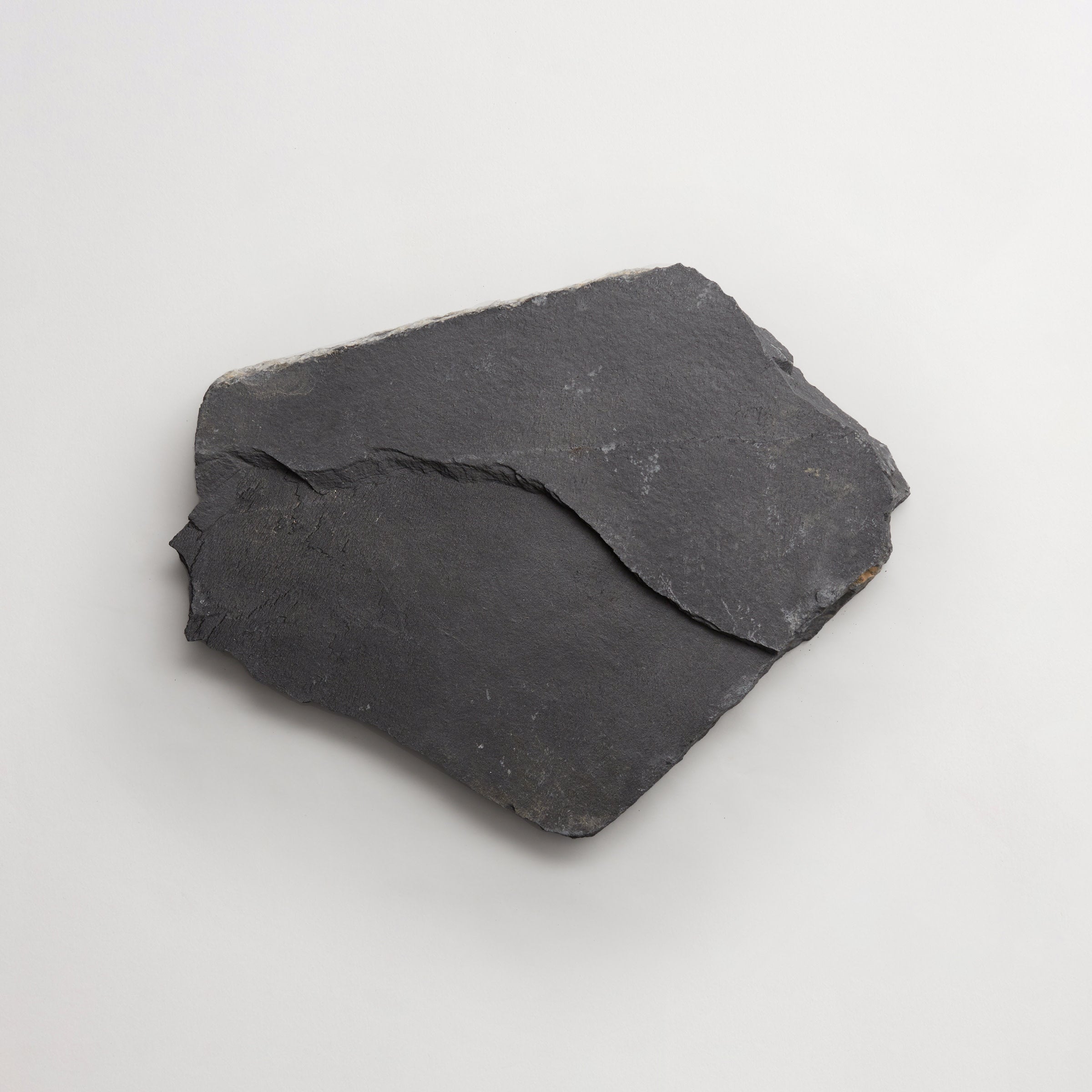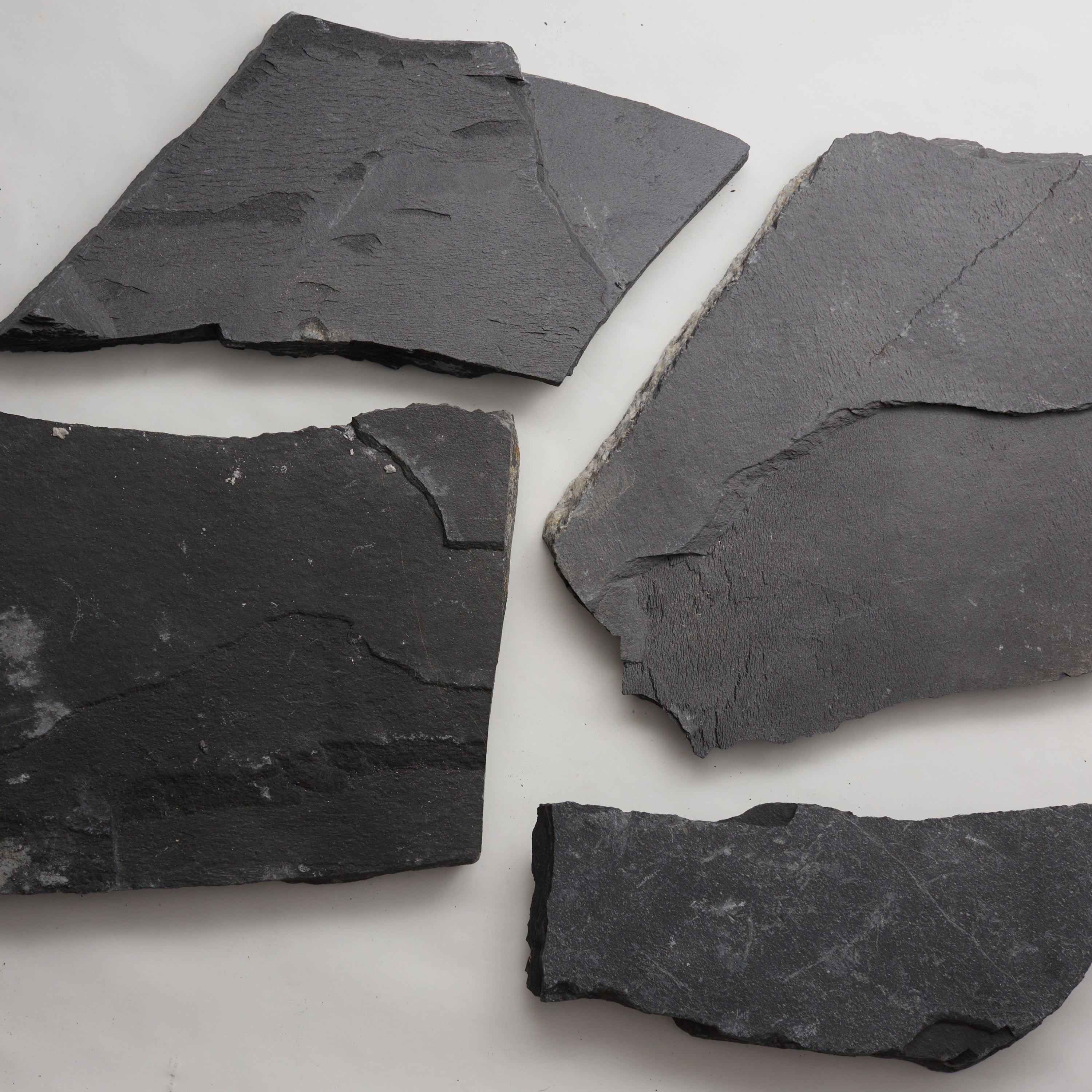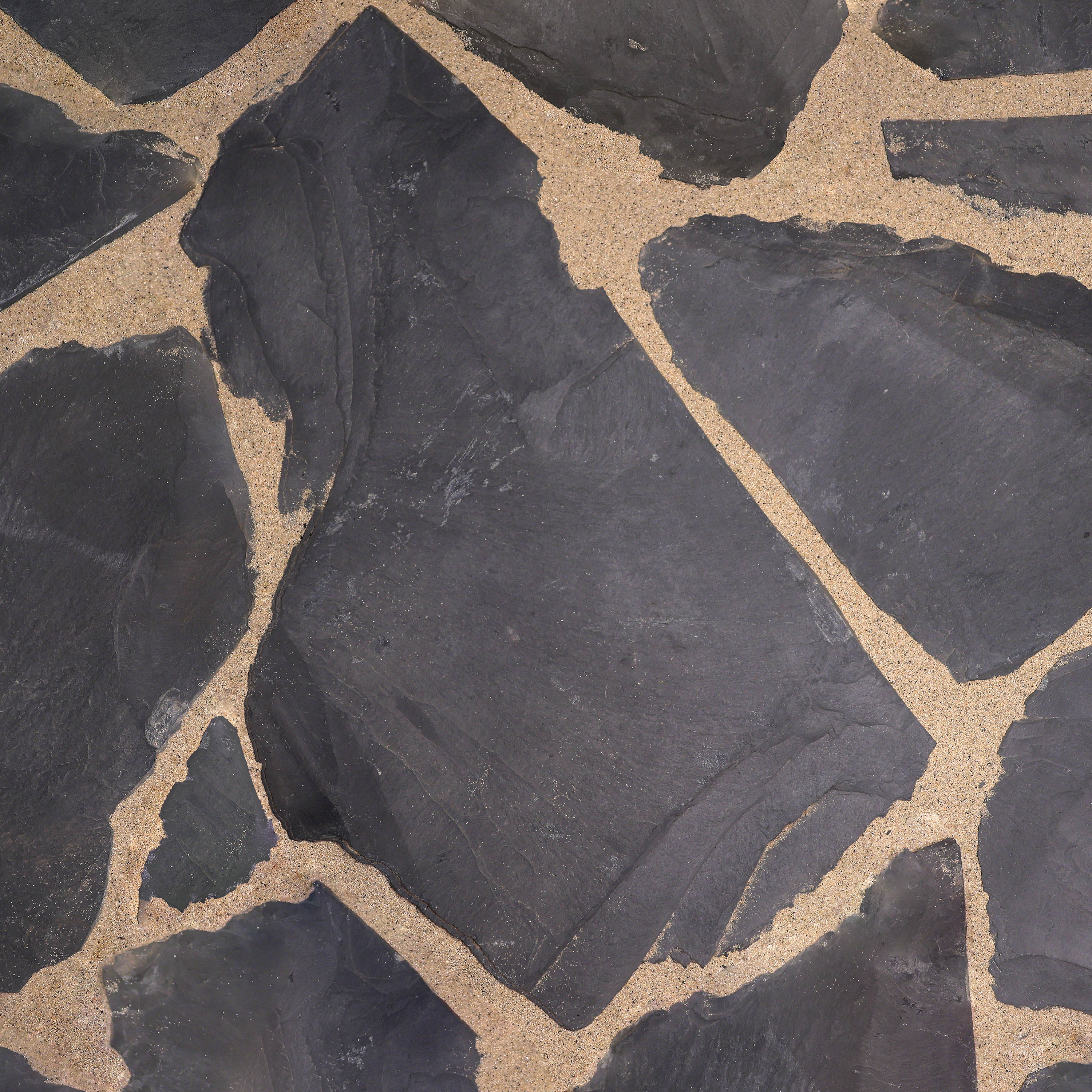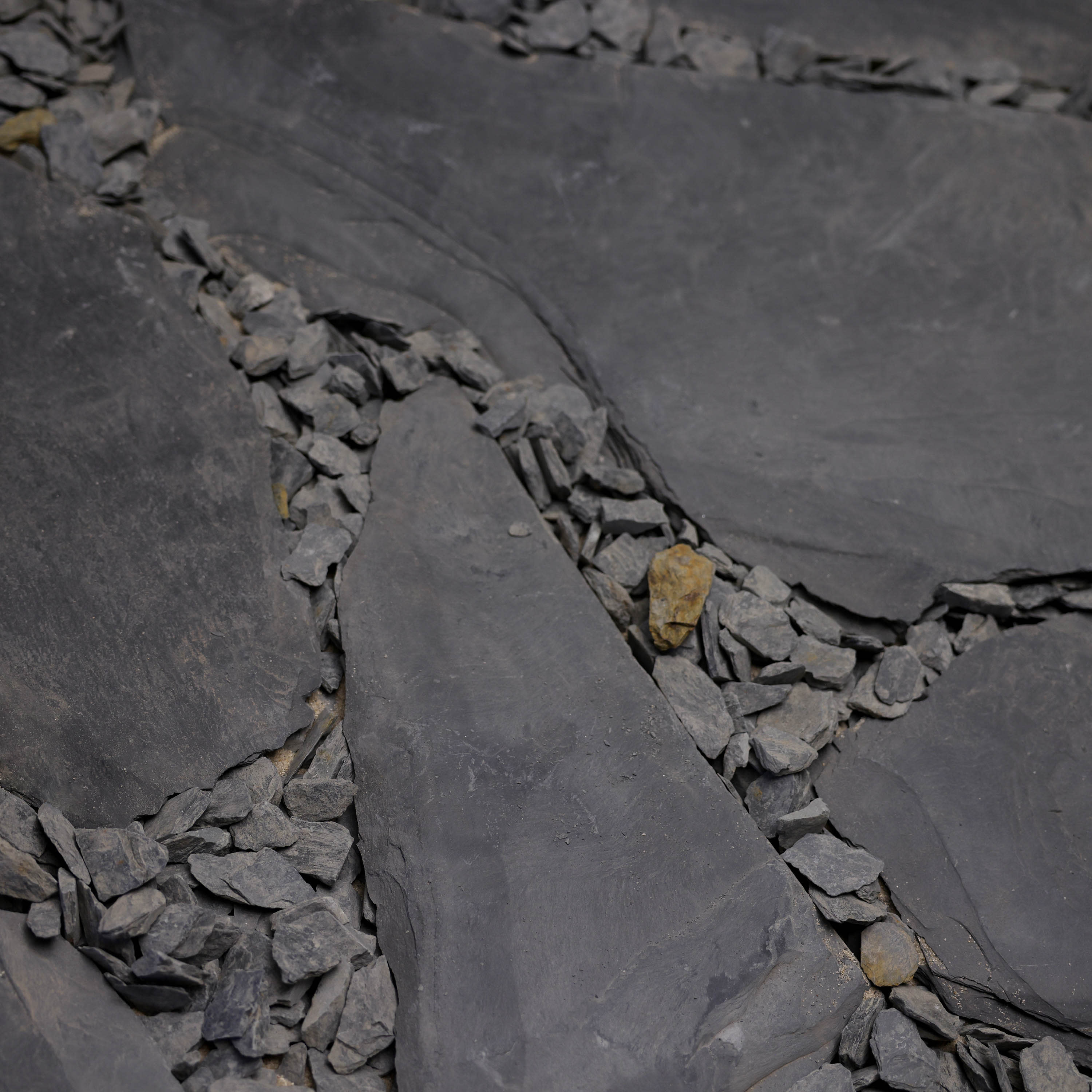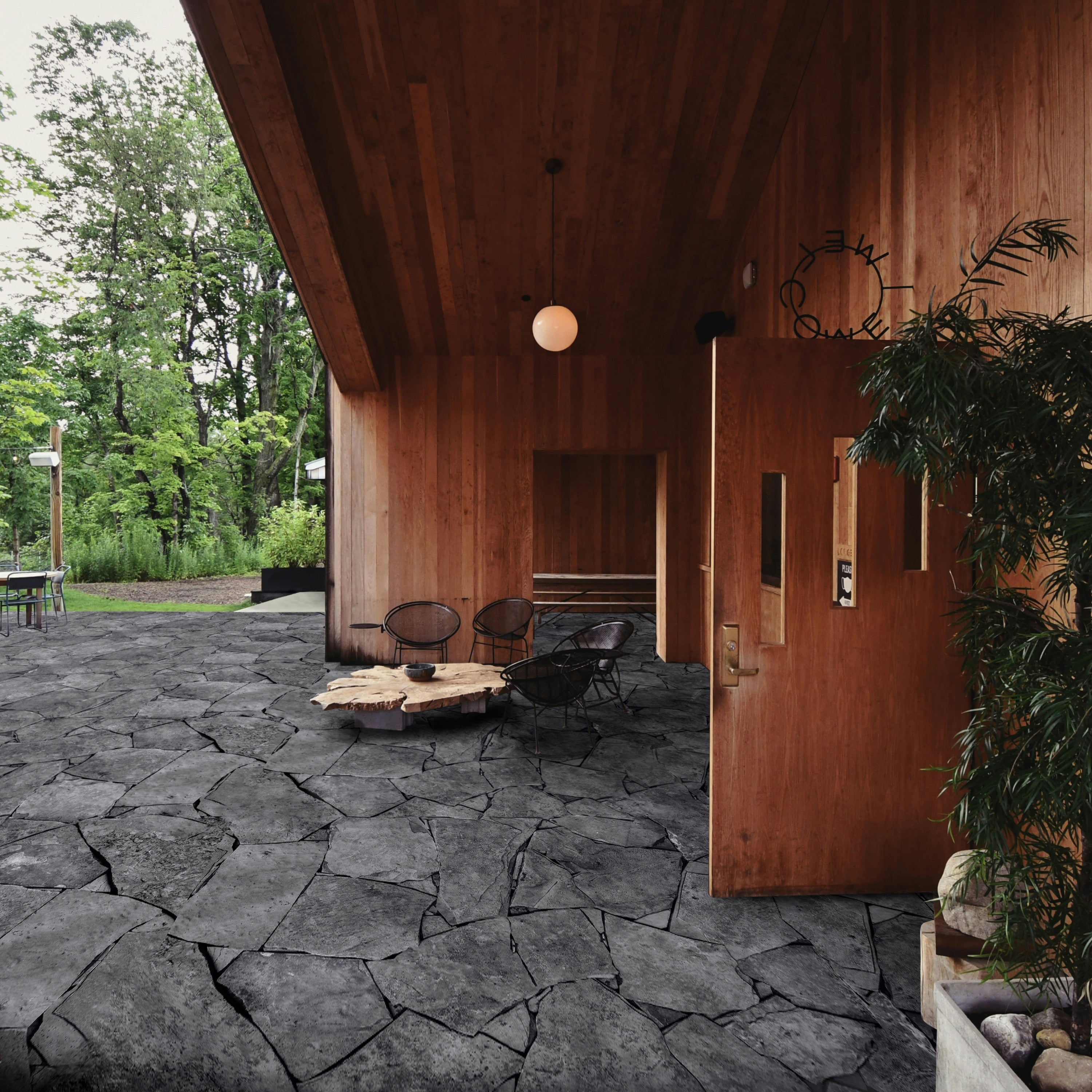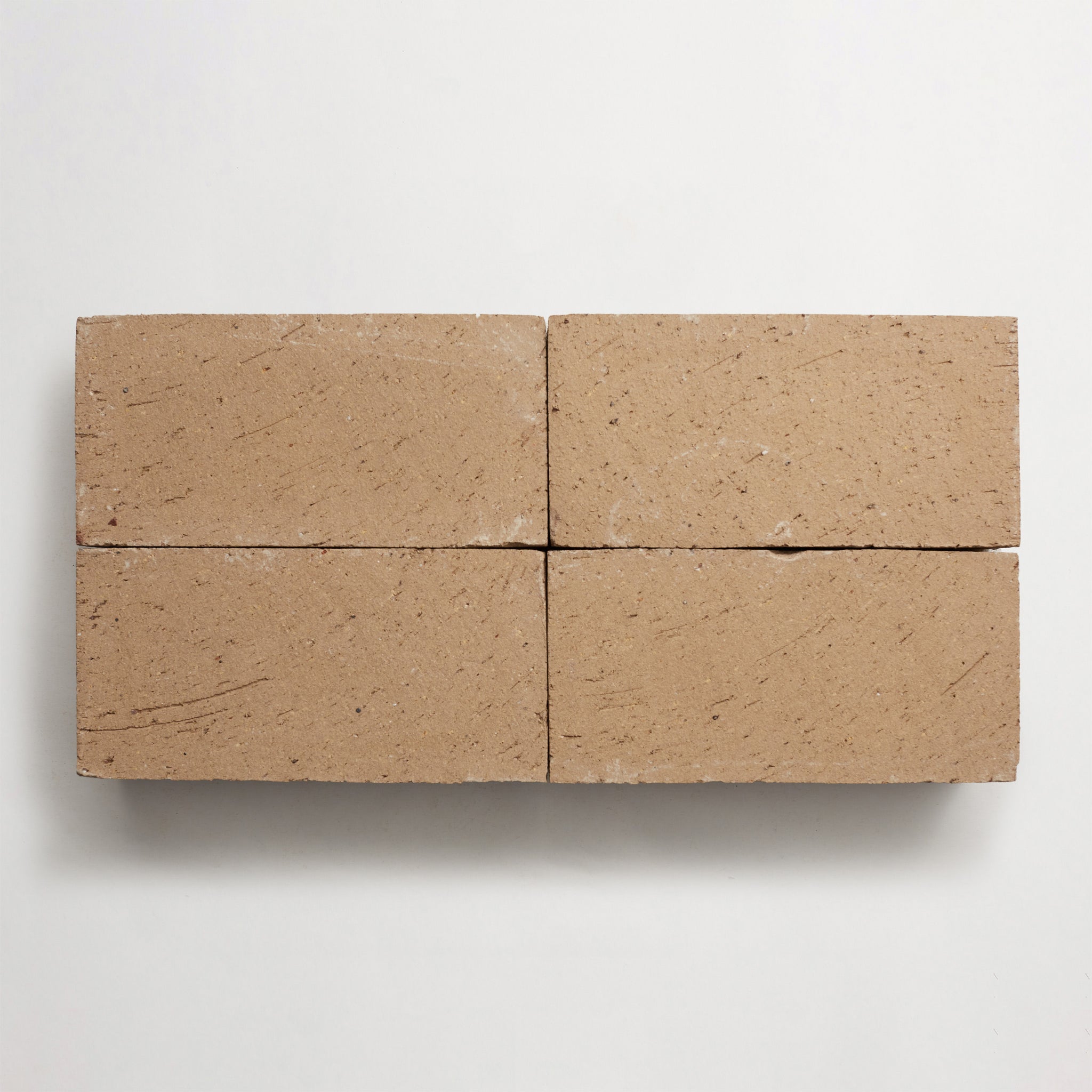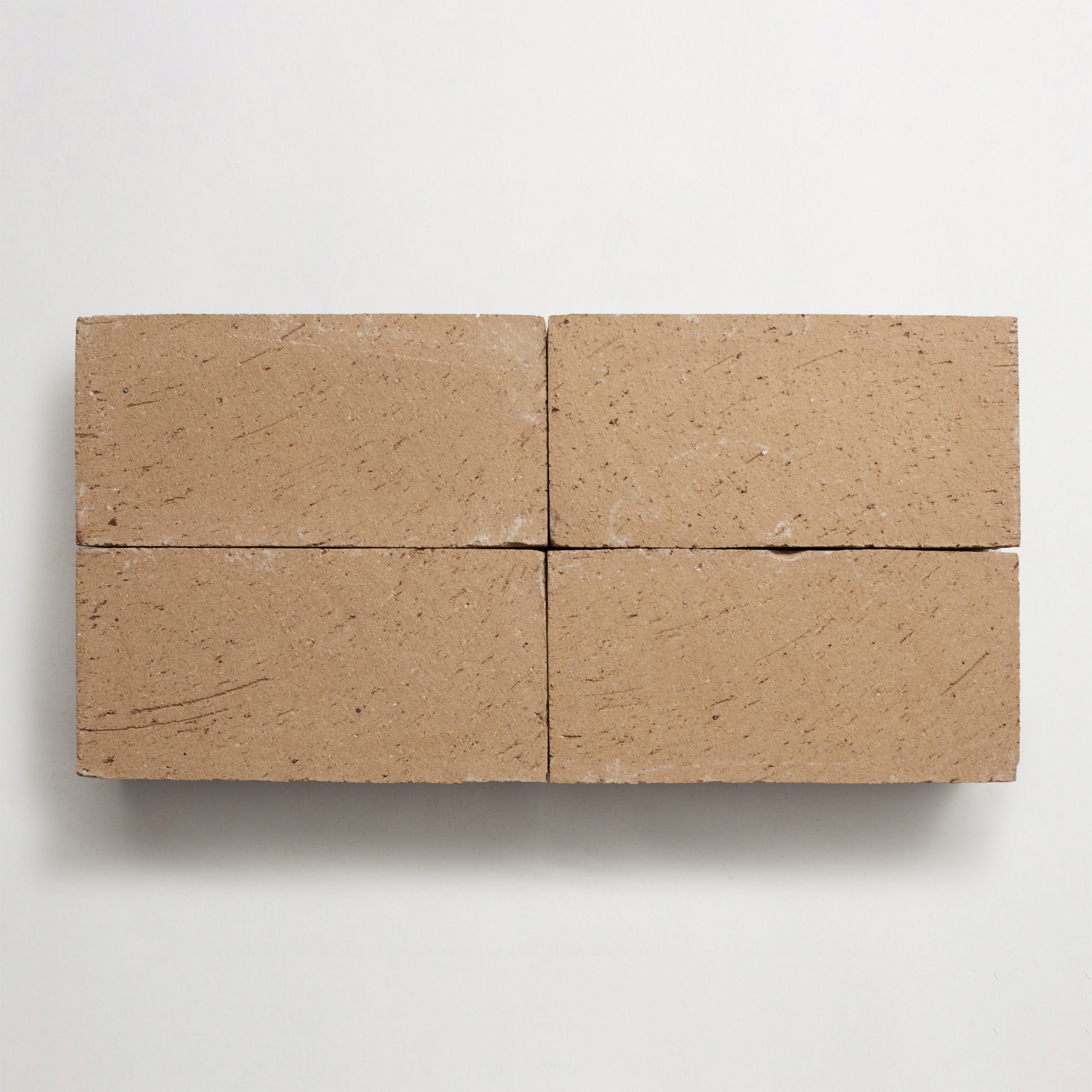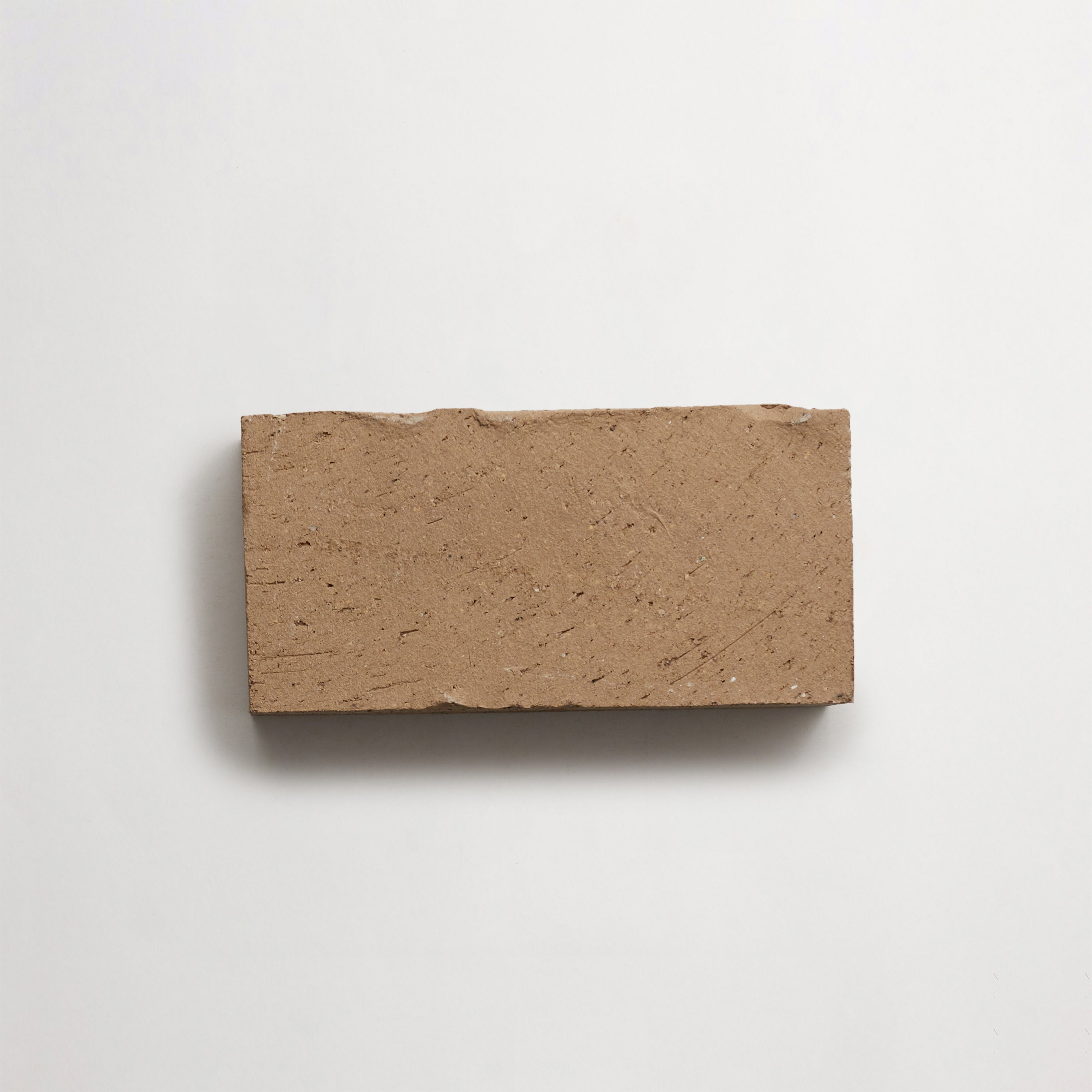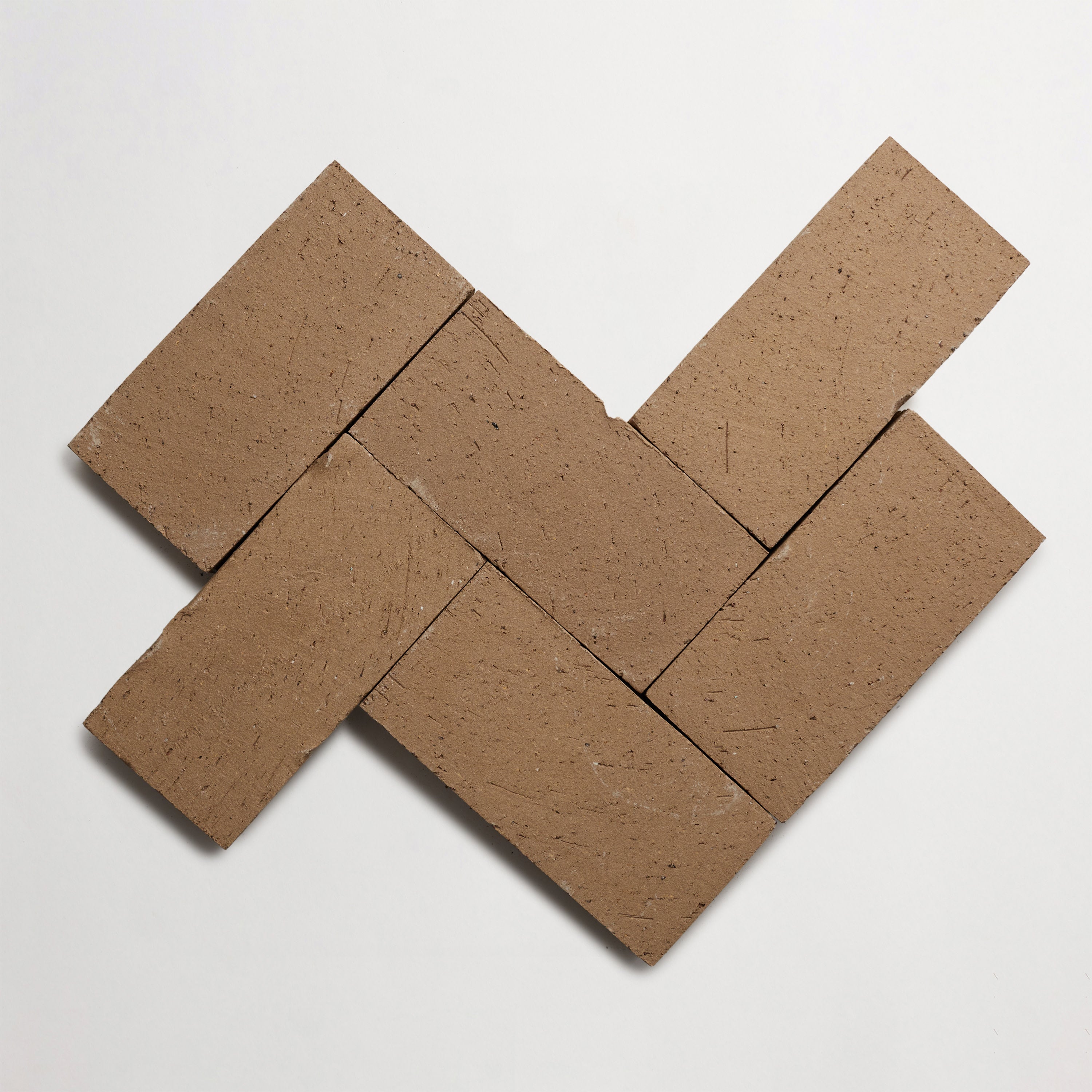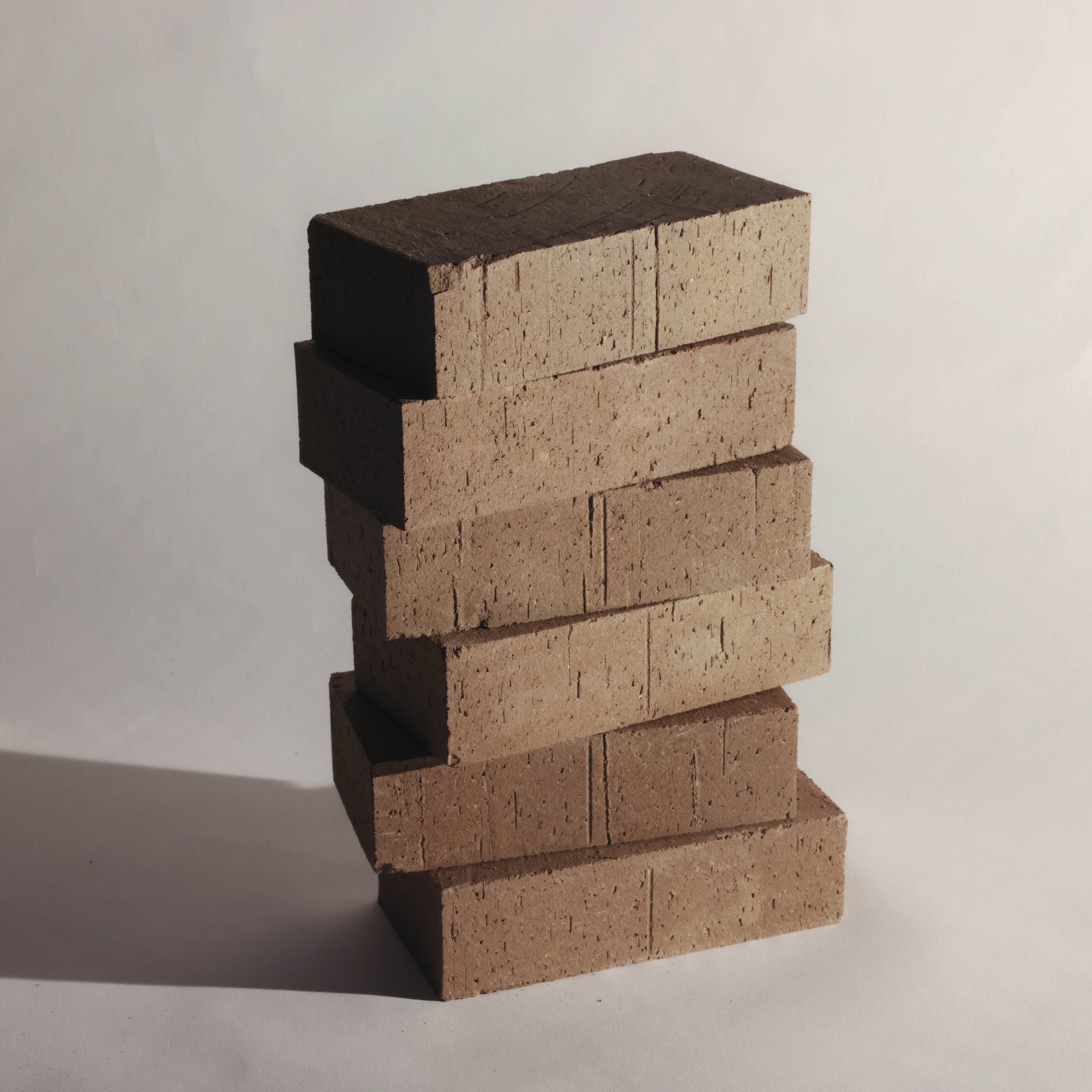your shopping cart is empty.

5 Best Low Maintenance Patio Materials
Many homeowners and designers alike ask: What is the best flooring for an outdoor patio? Choosing the best patio material for a project is always a balance of durability, upkeep, and aesthetics. Low maintenance patio materials reduce irrigation, cleaning, sealing, and repair cycles, but they still need thoughtful planning and installation — joint width, substrate, and drainage, for example — in order to perform.
This guide defines what “low maintenance” actually means in practice and explores a variety of patio material options tailored to common scenarios: hot climates, poolside, high-traffic entertaining areas, modern minimalist spaces, and rustic landscapes. We’ll even suggest practical specification notes for interior designers and landscape architects. So, let’s dive in.
What Makes a Patio Material “Low Maintenance”?
Low maintenance implies a combination of weather resistance, simple cleaning regimes, long service life, and predictable aging. It also accounts for repairability — how easy it is to source matching pavers or tiles and then replace them. Below, we break these criteria into specific categories designers can detail in their construction documents.
Weather Resistance & Durability
A material’s weather resistance has a major impact on what maintenance will look like. Porcelain and high-fired ceramics have very low porosity and resist freeze–thaw cycles, so they rarely crack in climates that see seasonal rain and snow. So, in response to the question “can porcelain tiles be used outside?”, the answer is a resounding yes.
In contrast, some terracotta tiles and softer limestone tiles can spall or stain after repeated wet-dry cycles. Travertine with open voids will absorb water, for example, and it can develop efflorescence in cold, wet sites. (Fortunately, proper sealing can help mitigate this.)
Meanwhile, encaustic cement pavers made for exterior use tend to resist abrasion and moisture better, as long as they are sealed properly. With any project, specify needed absorption rates and frost ratings for the best choice in exposed conditions.
Cleaning & Upkeep Needs
Cleaning frequency is another practical metric for low maintenance. Porcelain patios typically require an annual power wash and occasional spot cleaning, making them an excellent choice when labor budgets are limited.
Porous natural stones may need more frequent cleaning and periodic sealing —usually every one to three years — especially in shaded and damp areas where algae or moss can accumulate.
Brick pavers are another low maintenance option. When installed with permeable jointing, they typically need seasonal sweeping and an occasional joint refill. They’re a solid choice where surface traction and historic texture are priorities.
To ensure that your design maintains its beauty for years to come, state cleaning expectations clearly in your project’s specifications.
Longevity & Surface Performance Over Time
Longevity depends on a material’s hardness, installation, and exposure. Glazed porcelain and dense natural stone pavers can last for many years in pedestrian settings, while properly installed brick pavers can function indefinitely with periodic re-leveling. Softer stones like marble and travertine may show wear patterns in high-traffic areas over time, so if your client is not willing to embrace a well-worn patina, those materials may need to be replaced sooner.
For the best choice in long-term performance, always look for abrasion (PEI) ratings or equivalent exterior abrasion tests. In addition, reserve replacement unit allowances in the contract so matching for future repairs is straightforward.
5 Best Low Maintenance Patio Material Options—by Use Case
Below are five practical patio materials keyed to common outdoor scenarios, with pros and cons to help you choose the right option for your project’s climate and aesthetic intent. Your next outdoor floor tiles design starts here.
For Hot Climates: Terracotta or Stone & Marble Tiles
Terracotta and dense natural stone pavers can be excellent choices for hot climates when specified correctly. Terracotta has warm earth tones and integrates well with Mediterranean palettes. Choose frost-rated, low-absorption pavers and larger formats in shaded areas to reduce joint evapotranspiration. Dense natural stones with low porosity can moderate surface temperature and are available in different sizes to suit terraces and courtyards.
Note that polished marble and other types of stone can create glare. In addition, honed finishes are generally better for traction. Overall, these patio materials deliver tactile warmth and a refined palette suitable for sun-drenched projects while remaining a solid choice when sealed properly.
Pros
- Warm, timeless aesthetic that pairs with natural stone and brick details
- Good thermal mass—stabilizes surface temperature during hot days
- Available in different sizes to support scaled layouts and patterning
Cons
- Some terracotta and marble finishes require sealing to resist stains
- Glazed or polished surfaces can be slippery when wet or in shaded spots
- Certain marbles are softer and may show wear faster in high-traffic areas
For Poolside Areas: Cement or Glass Tiles
For poolside zones, low maintenance patio materials must tolerate splash, chlorinated water, and frequent foot traffic. Cement pavers with natural textured finishes offer traction and can be sealed for moisture resistance. They pair well with modern pool decks in mild climates that do not see freeze-thaw cycles.
Glass tiles are also a compelling choice for vertical surfaces like accent bands and waterlines because they resist staining and color fade. Cement and glass are excellent choices where stain resistance is desired and where the design calls for refined materials.
Pros
- Cement tiles offer a durable, slip-resistant finish and strong abrasion resistance
- Glass tiles resist staining and maintain color under UV and chlorine exposure
- Both materials can lend a modern look in mild climates
Cons
- Glass tile installation is specialized and can be costlier to replace
- Cement may require occasional sealing in high-splash zones to prevent staining
- Substrate detailing must be precise to avoid water infiltration and freeze damage
For High-Traffic Entertaining Spaces: Brick or Terrazzo Tiles
Entertaining areas demand materials that stand up to heavy foot traffic, moving furniture, and water exposure. Brick pavers, which can be installed in a variety of interlock patterns, are a proven, low-maintenance solution that allows for simple replacement and re-leveling. They also happen to be one of the best non-slip outdoor tiles out there.
Terrazzo tiles made for exterior use offer robust surface wear, design flexibility, and a contemporary finish that reads well at scale. It can also take on a wide variety of looks. Both of these gather tiles are excellent choices for courtyards, terraces, and commercial outdoor spaces when specified with durable binders, appropriate slip ratings, and maintenance protocols.
Pros
- Brick pavers offer proven interlock and straightforward repairs
- Terrazzo offers high abrasion resistance and versatile aesthetics
- Both handle heavy pedestrian loads and furniture movement well
Cons
- Brick may require occasional joint refilling and weed control
- Terrazzo can be more expensive upfront and requires trained installers
- Slip-resistant finishes are critical to ensure traction under wet conditions
For Modern Minimalist Designs: Cement or Ceramic Tiles
For minimalist plazas and modern terraces, cement and exterior-rated ceramic tiles offer clean lines and bold colors — important when the project calls for a more contemporary look. Cement pavers offer lasting color (unless they’re installed in areas with high UV exposure) while high-fired ceramic and porcelain provide extremely low porosity and minimal upkeep.
Both of these patio materials are an excellent choice when the design vocabulary prioritizes rectilinear patterning and low visual noise. They are also great patio paver alternatives that simplify replacement logistics for future repairs.
Pros
- Precise joint lines and bold coloring suit modern compositions
- Porcelain has minimal porosity and needs less sealing
- Available in large formats and various sizes to reduce visible joints
Cons
- Large-format tiles need careful substrate support to avoid cracking
- Cement surfaces can show efflorescence in poorly drained installations
- Edge restraint and movement joints add design complexity
For Rustic or Natural Landscapes: Terracotta or Brick Tiles
Rustic landscapes pair beautifully with terracotta and brick pavers, which harmonize with planting and aged materials. These patio materials age gracefully and come in a variety of different sizes. This makes them great for creating informal patterns and classic herringbone fields that complement stone steps, greenery, and other details.
Brick and terracotta are a solid choice where texture and patina are design drivers, and they offer fairly straightforward repairs, as well.
Pros
- Strong tactile character that integrates with planting and stone steps
- Readily available in a variety of colors for a versatile look
- Tolerates minor movement when installed on flexible sand beds
Cons
- Porous units may need sealing or more frequent cleaning in damp climates
- Color variation requires careful sampling to avoid mismatched fields
- Edge restraint detailing is crucial to prevent lateral migration
Patio Materials: Quick Comparison Table
| Maintenance Level | Slip Resistance | Aesthetic Versatility | Weather Resistance | |
|---|---|---|---|---|
| Terracotta | Medium (needs sealing every few years) | Medium–High (can become slippery when wet) | High (warm and timeless look that works across styles) | Medium (not always freeze-thaw rated) |
| Stone & Marble | Medium (needs sealing every few years) | Medium–High (honed and tumbled finishes offer good traction) | Very High (vast range of types and colors) | Medium–High (many options are freeze-thaw rated) |
| Cement | Low–Medium (needs sealing every few years) | Medium–High (natural finish provides some grip) | High (comes in a variety of shapes and colors) | Medium (not always freeze-thaw rated) |
| Ceramic | Low (easy to clean) | High (as long as you select matte and matte grip finishes) | High (comes in a variety of sizes and colors) | High (porcelain options have very low porosity) |
| Glass | Medium (may require more frequent cleaning) | Very Low (very slippery when wet; best for vertical surfaces) | Medium (sleek and modern aesthetic) | High (many options are freeze-thaw rated) |
| Brick | Low (sweeping and resealing optional) | High (natural texture provides good grip) | High (comes in a variety of colors) | High (excellent weather resistance and holds color well) |
| Terrazzo | Medium (needs sealing every few years) | Medium (can be slip-resistant with the correct sealer) | Very High (wide variety of colors and aggregates) | Medium (not always freeze-thaw rated) |
Conclusion
Selecting the best patio material depends on a variety of factors including climate, maintenance expectations, and the desired aesthetic. For hot climates, terracotta and natural stone are excellent choices. Poolside areas benefit from cement or glass, on the other hand, while high-traffic entertaining zones favor brick or terrazzo. Modern minimalist projects work well with cement and ceramic, and rustic landscapes shine with terracotta and brick. Explore OUTERclé’s collections to find artisan-made types of outdoor tiles in different sizes to meet your project’s durability and visual goals.
Decorate nature by designing your patio with beautiful yet low maintenance patio materials. Discover artisan-made outdoor tiles.
-
Sand
-
Pemberley Pavers
:
-
Chromatope
-
4
" x
-
4
" x
-
⅛
"
-
sqft
/
$
-
Slate
-
Grangestone
:
-
Alegria
-
8
" x
-
8
" x
-
⅞
"
-
sqft
/
$
:
" x
" x
"
/
$







